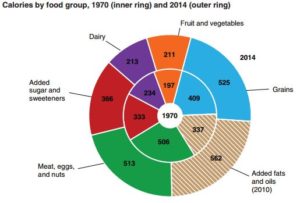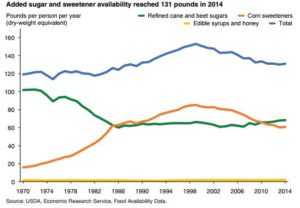Nutrition professor that I am, if I could teach just one thing to the American public, it is this: Larger portions have more calories.
Please don’t laugh.
If we all understood this, the United States would not have an obesity problem. And the recent revelation that places like Chipotle and Panera serve meals with more calories than McDonald’s would surprise nobody. We would realize the former’s “health” aura blinds people. But this basic rule applies to those places, too.
We would also, strangely, thank McDonald’s for at least one thing: It limits portion sizes. It’s easy to pile on calories by asking for a little more of this, then a refill of that—without realizing that the calories surpass those in McDonald’s meals.
It’s not easy to understand calories. They are not intuitive because they’re abstract. They cannot be seen, tasted or smelled, and are extraordinarily difficult to count accurately, even for scientists. My colleague Lisa Young, author of The Portion Teller, once asked an entry-level nutrition class to guess the calories in 8-ounce and 64-ounce soft drinks. We didn’t expect students to know that an 8-ounce Coke has 100 calories—but we certainly expected them to multiply whatever they guessed by eight for the 64-ounce drink. But the average multiplier was three.
The unintuitive relationship between amounts eaten and calorie intake is one of the reasons behind public health campaigns like the new soda tax in Philadelphia, which in part aims to get people to think twice before drinking sugary beverages. No nutritionist worries about an occasional 90-calorie mini-can of soda. But many people drink sugary beverages in 12-ounce, 20-ounce or liter sizes. Bigger sizes mean more calories, and more calories means more weight unless you compensate with physical activity.
But exercising off calories takes a lot of work. That was the message of aNew York City health department campaign demonstrating the need to walk the three miles from Union Square to Brooklyn to compensate for the nearly 300 calories in a 20-ounce soft drink.
And let’s not forget that all of the calories in soft drinks come from sugars, which provide nothing but calories—no vitamins, no minerals, no fiber. They may be delicious, but they have no redeeming nutritional value. That’s why their calories get called “empty.”
Does where calories come from make any difference? Yes, but in complicated ways. Weight balance depends on calories. But managing weight—and overall health—very much depends on where those calories come from. It’s not so easy to overeat vegetables, fruits and whole grains, or relatively unprocessed foods of any kind, because these tend to be bulky and fill you up before you eat too much. You can still gain weight on these healthy foods, but it’s harder. Chipotle may have healthier calories than McDonald’s, but its calories still count.
Sugars post particular problems because they induce insulin production, but also because they make foods taste good. We eat something sweet and want more of it. We start loving sweet tastes in infancy. Breast milk is sweet; it contains a tablespoon of lactose per cup and that’s there for a reason—to make babies do the work of nursing.
But sodas are very sweet. A 12-ounce soda contains more than threetablespoons of sugars—and the calories that go with them.
It’s also very hard to separate the effects of sugars from their calories. If scientists want to know whether the calories from sugars are worse than those from any other foods, they need to feed people precisely the same number of calories from diets widely varying in their content of sugar, other carbohydrates, protein, and fat for a long enough period of time to get meaningful results. The only way to do something like this would be to keep the study subjects under lock and key for as long as it takes—inconvenient, to say the least, and very expensive.
Until the science is resolved, we can all agree that eating less sugar is a good idea for just about everyone. Sugars are nutritionally empty, are hidden in foods, and encourage overeating.
Notice that I said less, not none. Personally, I love desserts and would never want to give up sugars entirely or ask anyone else to do so. I just follow my own dietary advice: eat lots of vegetables and other relatively unprocessed “real” foods, and for everything else, pay attention to portion size. This way, an occasional sugary treat is a pleasure and nothing to worry about.
Marion Nestle is professor of nutrition, food studies, and public health at New York University and co-author of Why Calories Count. Her most recent book is Soda Politics: Taking on Big Soda (and Winning).




